Although hundreds of visitors come to John o’Groats every year, very few venture to the extreme north-east of mainland Scotland: Duncansby Head.
From the northerly village an initially easy walk with views of the Pentland Firth leads by sandy bays before a dramatic cliff-lined section of coast is followed.
The air is filled with the sounds of puffins, kittiwakes and other seabirds as the path looks out to the remarkable, pointed sea stacks of Duncansby.
Looking for more great walks? Check out our guides to Britain's best coastal walks, summer walks and easy mountain walks.
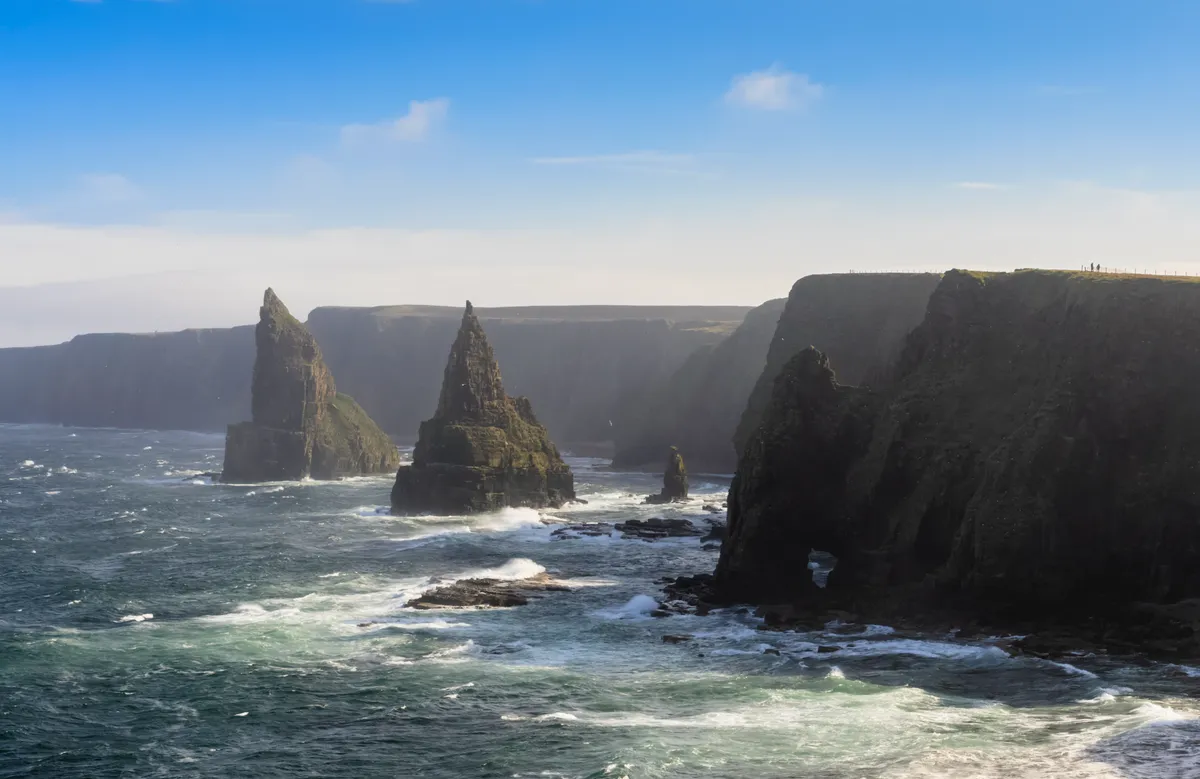
Duncansby Head map
6 miles / 9.6km | 3–4 hours | moderate | 165m ascent
1. John o'Groats
Walk down to see the famous signpost before following the coast to the right. This is waymarked as the John o’Groats Trail, with octagonal markers and white paint, and extends to Inverness. With good weather and little cloud cover you will be able to see the abandoned Island of Stroma, and, beyond, the southern-most Orkney islands.
The path leads easily by the shoreline to run by a bay. Then it veers left to reach the headland, the Ness of Duncansby.
Scotland walks
Explore the Highlands, Scottish Isles, Borders and more with our guide on the best walks in Scotland.
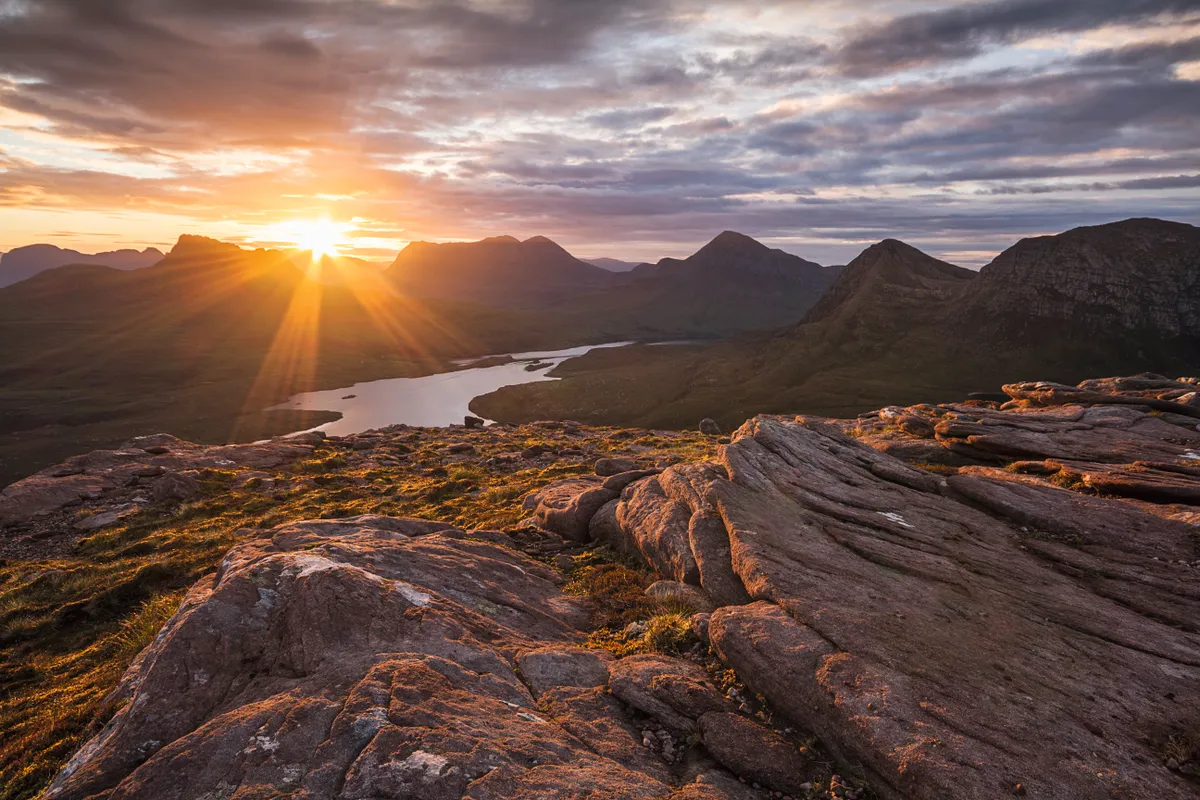
2. Bay of Sannick
Cross a burn at the sandy Bay of Sannick before climbing steeply up a grassy slope. Stay well back from the cliff edge to walk by The Glupe, a natural arch. Next walk towards the minor road.
3. Duncansby Head lighthouse
Turn left on Duncansby Head Road to reach a sturdily built lighthouse designed by Robert Stevenson, the grandfather of author Robert Louis Stevenson.
This remote location is the most north-easterly point of the Scottish mainland and one can see views extending north over Orkney, and west to John o'Groats and Dunnet Head. This latter headland, which also has a Stevenson-designed lighthouse, is mainland Scotland’s most northerly point by quite a margin over John o'Groats.
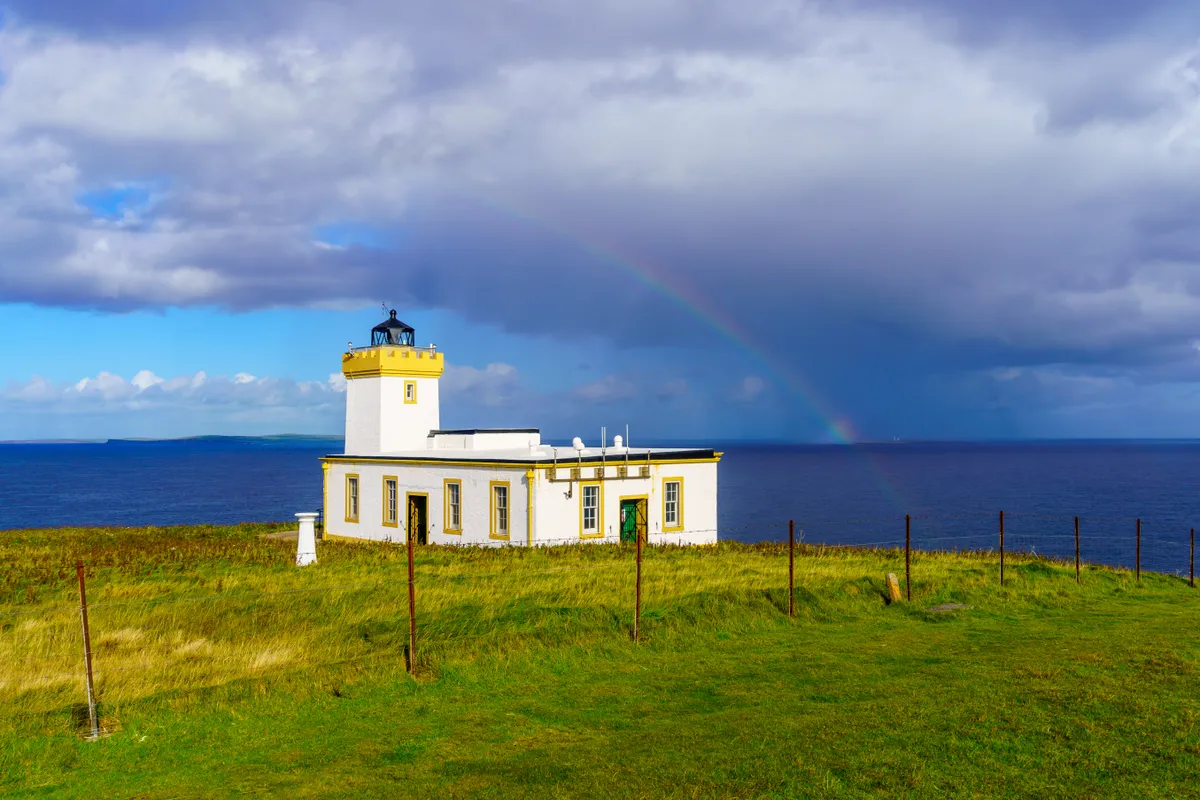
The onward path is clearly signed from the adjacent car park, which is an alternative start point for a shorter walk.
After a few minutes walking you will be close to the Geo of Sclaites. You will know you are close due to the raucous sound of thousands of nesting seabirds. They are attracted to the vertiginous deep ‘geo’ or cleft in the old red sandstone cliffs; gannets, fulmars, skuas, razorbills, shags and puffins can be seen. The unusual name comes from the Norse word ‘gya’, meaning creek.
Guide to Britain’s lighthouses
We explore the history of lighthouses in the UK, the best lighthouses to visit and lighthouses you can stay in.
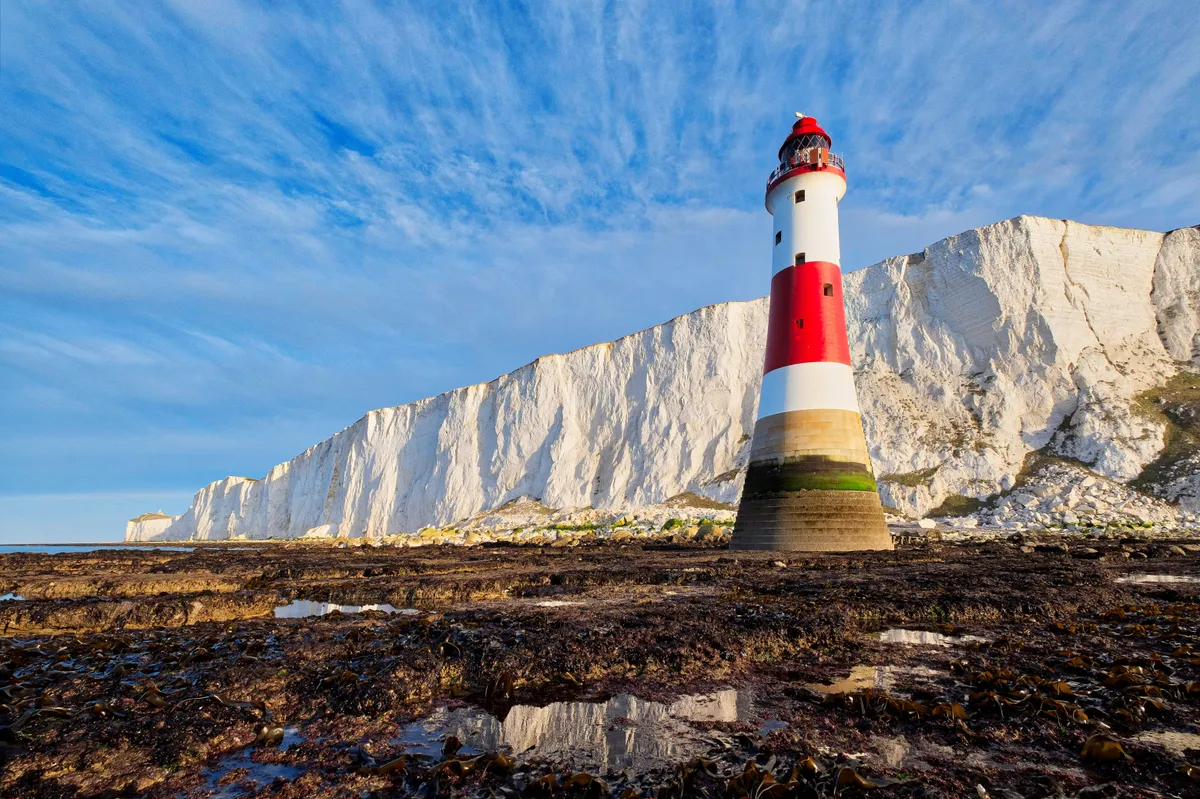
4. Duncansby Stacks
The path descends to the lowest point on the coast before rising to give a view of the Thirle Door sea arch and, further away, the stacks of Duncansby. It’s well worth continuing to get a closer look at these jagged stacks and enjoy the unspoilt setting.
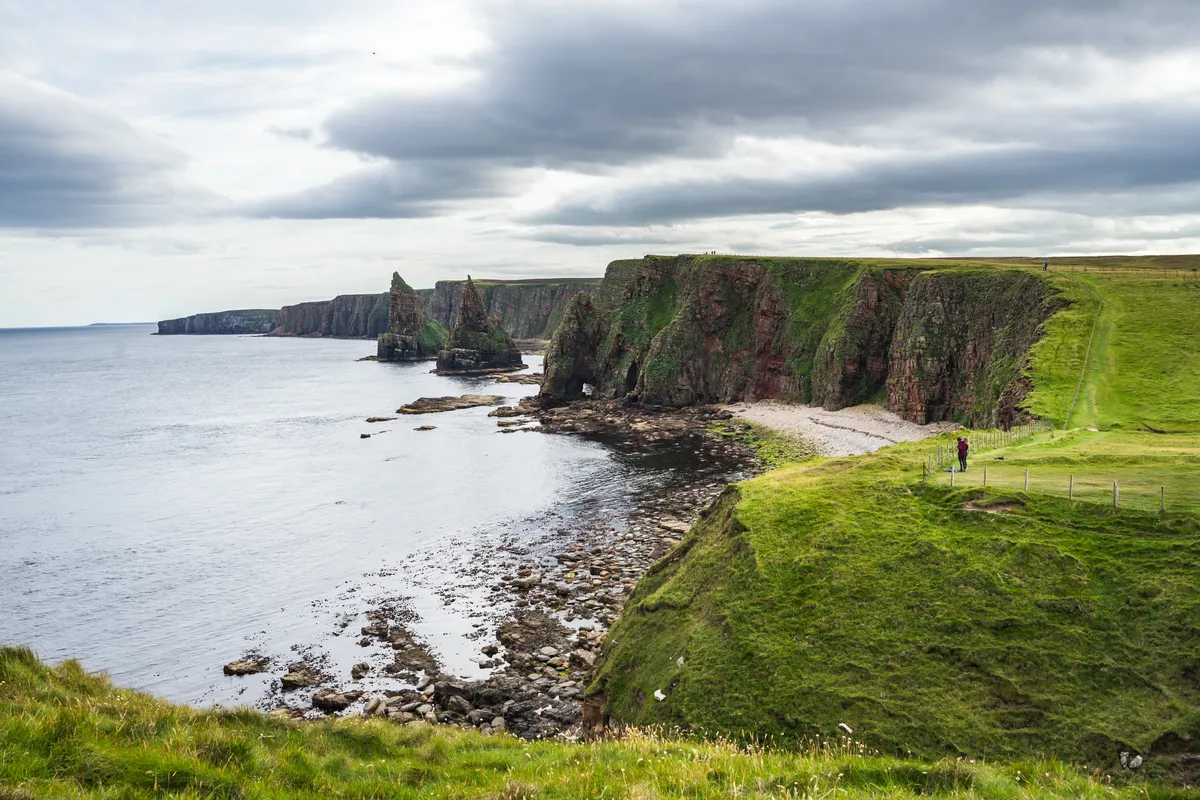
5. Return leg
The return follows the outward route back to John o'Groats.
Duncansby Head
Duncansby Head – OS Maps walking route
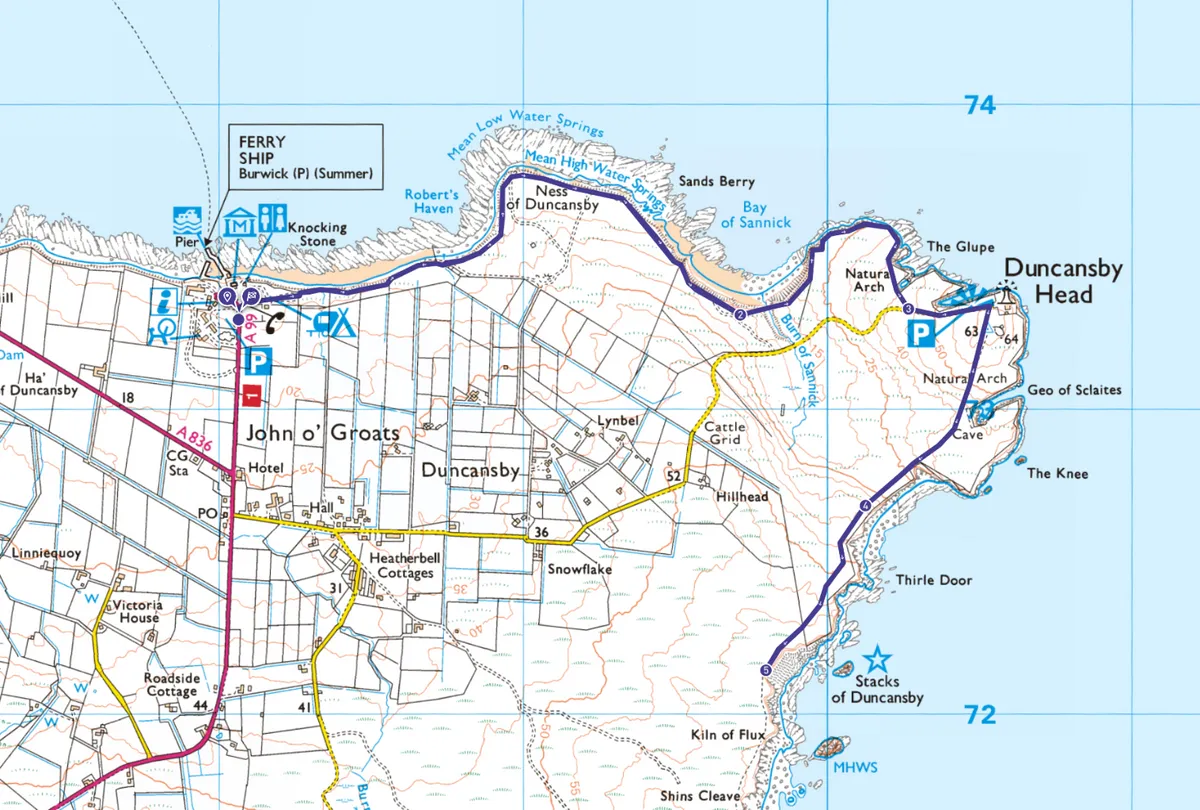
Useful information
Starting point
Terrain
Map
Eat and drink
Stay
The Northern Sands Hotel overlooks beautiful Dunnet Bay close to John o’Groats. Dunnet, Thurso KW14 8XD.
